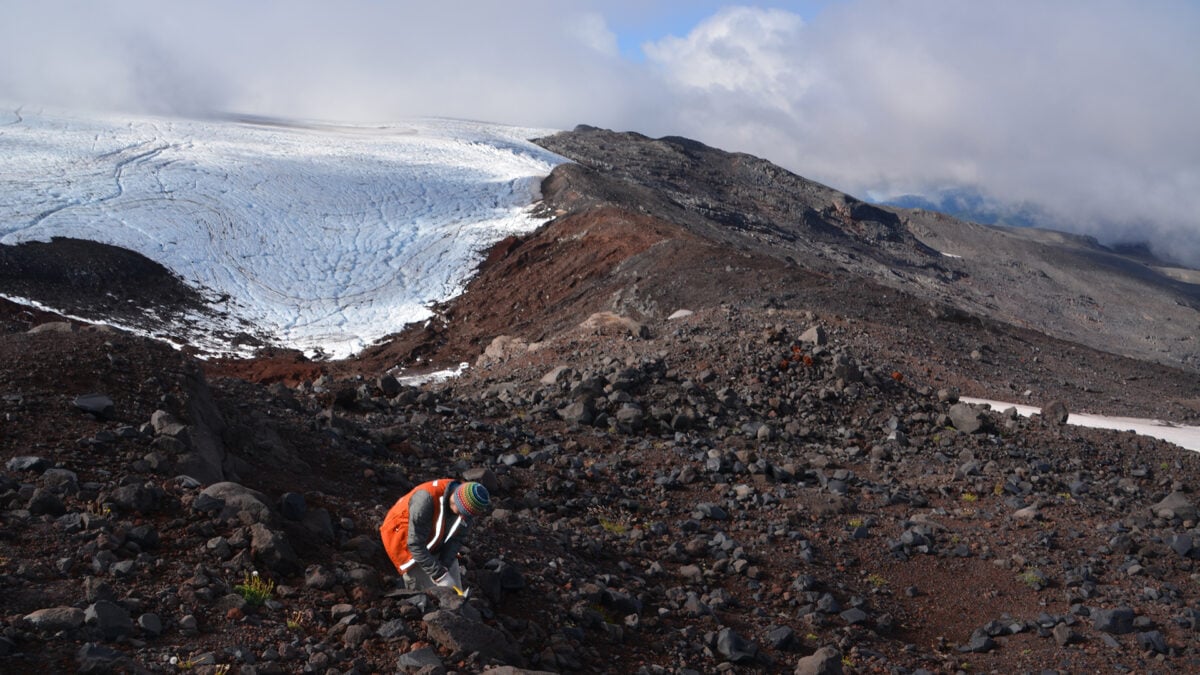As if we needed another reason to worry about the climate crisis, researchers have found that melting glaciers could trigger a surge of intense volcanic eruptions in the future.
Across the globe, hundreds of subglacial volcanoes—formed by eruptions beneath glaciers—lie dormant under thick layers of ice. A new study, presented at theGoldschmidt Conference in Prague, suggests that these volcanoes could awaken as climate change accelerates glacier retreat, potentially leading to an increase in volcanic eruptions around the world.
This is particularly concerning in West Antarctica, where at least 100 subglacial volcanoes have been identified. Glaciers in this region are rapidly disappearing as the planet warms.
“Our study suggests this phenomenon isn’t limited to Iceland, where increased volcanicity has been observed, but could also occur in Antarctica. Other continental regions, like parts of North America, New Zealand, and Russia, also now warrant closer scientific attention,” said Pablo Moreno, a geologist from the University of Wisconsin–Madison and one of the study’s authors, in astatement. According to a2020 study, 245 of the world’s potentially active volcanoes lie underneath or within 3 miles (4.8 kilometers) of glacial ice.
Since the 1970s, Iceland has experienced increased volcanic activity linked to retreating glaciers. However, this study is among the first to show how melting glaciers have influenced volcanic behavior across an entire continent.
To investigate the link between past volcanic activity and glacier retreat, researchers studied the melting of the Patagonian ice sheets thousands of years ago and the ensuing eruptions. They used argon dating and crystal analysis on six volcanoes in southern Chile, including the inactive Mocho-Choshuenco volcano. This allowed them to determine the timing of past eruptions and trace how the weight and pressure of glacial ice affected the behavior of magma underground. The study was a collaboration between scientists at the University of Wisconsin–Madison, the University of California, Los Angeles, Dickinson College, and Lehigh University.
The researchers found that during the peak of the last Ice Age—around 26,000 to 18,000 years ago—the thick ice cover suppressed volcanic activity, allowing large pools of magma to accumulate 6.2 to 9.3 miles (10 to 15 kilometers) below the surface. Then, as the ice sheet melted around 13,000 years ago, the sudden loss of weight caused the Earth’s crust to relax and allowed gases and magma underground to expand. This pressure buildup triggered explosive eruptions.
“The key requirement for increased explosivity is initially having a very thick glacial coverage over a magma chamber, and the trigger point is when these glaciers start to retreat, releasing pressure,” said Moreno-Yaeger.
Increased volcanic activity could also have global climate effects. In the short term, eruptions release aerosols that can temporarily cool the planet. But over time, the cumulative effect of multiple eruptions can contribute to warming by releasing greenhouse gases.
“Over time the cumulative effect of multiple eruptions can contribute to long-term global warming because of a buildup of greenhouse gases,” said Moreno-Yaeger. “This creates a positive feedback loop, where melting glaciers trigger eruptions, and the eruptions in turn could contribute to further warming and melting.”
Climate changeclimate disastersglaciersVolcanic eruptionsVolcanoes
Get the best tech, science, and culture news in your inbox daily.
News from the future, delivered to your present.
Please select your desired newsletters and submit your email to upgrade your inbox.
The constant deluge of bad news about rising global temperatures and their impacts can make it feel like the world is ending. Is it?
These ancient cores may contain clues about an unexplained change in Earth’s glacial-interglacial cycles, and could shed light on how human-generated emissions will shape our planet’s future.
Several years of repeated volcanic eruptions near the town of Grindavík have driven most residents to flee.
Under the second Trump administration, it’s becoming increasingly harder to access information about the climate crisis.
Six Republican Congress members callously urged Canada to take “proper action” to mitigate smoke wafting into the U.S.
Climate activists and Trump advisors are on the same page on one thing: they hate Apple.



 Motivational
Motivational 22 Jul, 2025
22 Jul, 2025 Layla Rogers
Layla Rogers